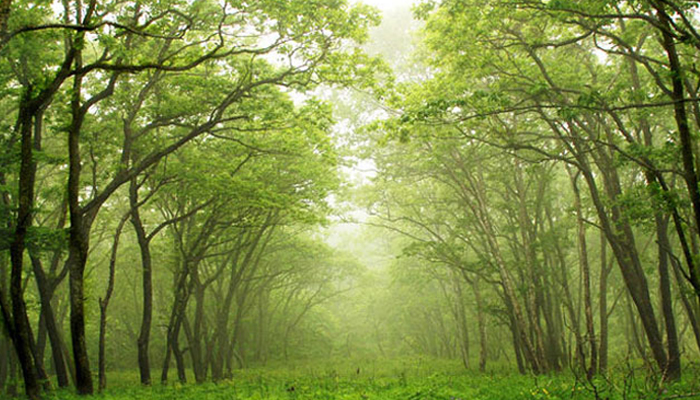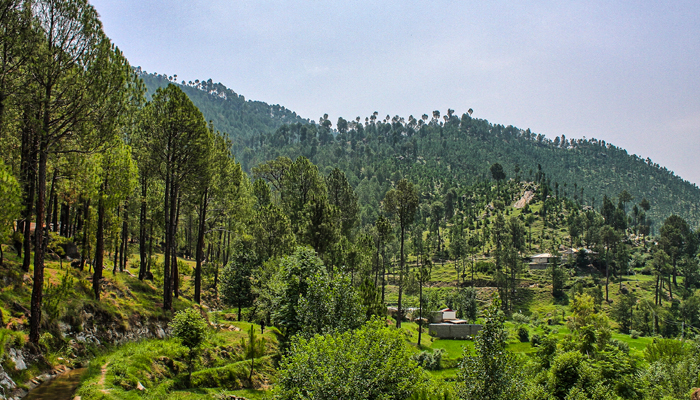What if an event where not only the names of their field are present but they also have the passion to teach? One such workshop was invited by WWF Pakistan.The number of environmental journalists can probably be counted on the fingers of one hand. WWF Pakistan and well-known environmental writer Shabina Faraz, who are committed to solving the growing environmental and climate problems, made this workshop eight moons by incorporating photojournalism into their efforts. It was a rare opportunity to talk to colleagues about the changing climate, efforts to restore mangroves, environmental issues in Sindh, Balochistan.In the ongoing two-day workshop organized by WWF Pakistan, experts expressed their views on Pakistan’s climatic and environmental problems, their remedies, and prevention of future threats.
Electronic and social media representatives including journalists from Sindh, Balochistan participated on this occasion. Marking Pakistan’s diverse environment and the threats it poses, WWF Sindh, Balochistan Regional Head Dr. Tahir Rasheed, environmental journalist Shabina Faraz, mobile journalism expert Ayaz Imtiaz, social media trainer Hassan Zia, Arab News’ Neemat and Renowned journalist Sudra Dar and others spoke.Dr. Tahir Rasheed emphasized the importance of journalists in raising awareness and consciousness among the public on the topic of environment. He said that Pakistan is among the countries where nature has blessed diverse life systems, but brutal hunting is considered a hobby in Pakistan and its pictures are uploaded on social media. Pakistan has excellent environmental laws, which need to be implemented.
Shabina Faraz said on this occasion that in the world’s second largest Indus Delta, the risk of extinction of fish and shrimps is increasing due to rising sea water, non-availability of agricultural land, and indiscriminate cutting of tamer. The Tamar tree is considered a safe haven for marine life. Throwing light on environmental journalism, he said that it is the responsibility of a journalist to report fully aware of the environmental issues around him. Describing plastic as a threat, he emphasized the use of paper and cloth bags. He also shared his professional experiences.Saeed, spokesperson of WWF Pakistan, told the audience that there used to be 450,000 hectares of tamer forests in Pakistan. Due to the cutting of their wood for fuel, their number was reduced to only eighty five thousand hectares, but now with the support of local people, their number has increased to two and a half million hectares. In this regard, training is provided to the local people to prepare plants and then the plants are purchased from them and planted.
On this occasion, Ayaz Imtiaz Khan, an expert in mobile journalism, enlightened the journalists about the importance of mobile journalism in the future and provided information on the use of useful techniques and tools in this regard. He said that the age is rapidly becoming digital, as a result of which the provision of information is not limited to just news. Thanks to the easy access and use of social media, everyone can now play the role of writer, cameraman, editor, anchor and publisher.Abdul Rahman, in charge of Wetland Mangrove Forest, said that wetlands are very important in Pakistan, behind it is the backwater channel and in front of the sea. It is the abode and habitat of birds and different species of animals. The participants of the second day of the workshop won appreciation by making video clips based on the technique of photojournalism on the theme of environmentalism as a plantation and activism by Tamer.
These forests are home to 36 species of rare birds, including raptors, bears, black bears, wolves, foxes, jackals and migratory birds, more than 13 valuable wild animals and chakors. There are more than 54 species of valuable plants and herbs that are used in the preparation of medicine, while these forests are also very helpful in keeping the ponds, springs and underground water reservoirs safe and continuous for the local population. are
Taimur Forests Stretching from Sandspit to Port Qasim in Karachi, Taimur forests act as a natural wall to protect Karachi from natural calamities.Tamar forests prevent sea erosion and provide protection from storms and floods in the sea. In 2004, the dangerous tsunami in the Arabian Sea targeted many countries including India, but Pakistan because of these tamer forests. Stay safe.
But it is feared that this may not happen now. Due to the arbitrariness of the timber mafia, the area of Taimar forests spread over 60 thousand acres of land has decreased by more than half and the forests of Taimar are now facing the threat of their survival.Cutting of trees in Pakistan Federal Bureau of Statistics says that from the year 2000 to 2005, the forests of Pakistan were cut down enormously. This deforestation is due to the rapid and rampant expansion of cities, deforestation for agriculture, and global warming.According to experts, when the forests in a place are cut, many places including this place come under the threat of severe floods. The process of desertification starts there, that is, the place becomes barren, while there All wildlife populations begin to decline rapidly.Currently 30% of our land is covered by forests. According to the Food and Agriculture Organization of the United Nations (FAO), 1.8 million hectares of forests are cut down every year. Deforestation is one of the main causes of global warming, due to which toxic gases remain in the atmosphere and increase the temperature of a place.



